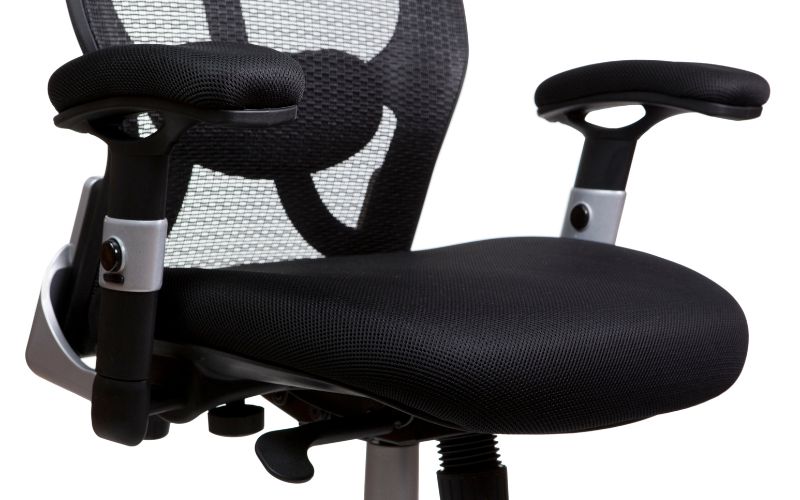Poor sitting posture can lead to a host of problems, including back pain, neck pain, and headaches. In this article, we will explore the key elements of good sitting ergonomics and how to apply them to your daily routine.
What is Sitting Ergonomics?
Sitting ergonomics is the study of how to optimize the design of workstations and chairs to minimize discomfort and prevent musculoskeletal disorders. Ergonomics experts focus on making sure that people can work comfortably and safely by reducing physical stress and strain on the body.
The Elements of Good Sitting Ergonomics
Chair Height
The first element of good sitting ergonomics is chair height. Your chair should be adjusted so that your feet are flat on the ground, and your knees are bent at a 90-degree angle. If your chair is too high, it can cause pressure on the underside of your thighs, which can lead to discomfort or even numbness. If your chair is too low, you may slouch, which can cause strain on your back and neck.
Desk Height
The second element of good sitting ergonomics is desk height. Your desk should be at a height where your forearms are parallel to the floor when typing. If your desk is too high, you may find yourself hunching over to type, which can cause strain on your neck and shoulders. If your desk is too low, you may find yourself reaching up to type, which can cause strain on your shoulders and upper arms.
Chair Depth
The third element of good sitting ergonomics is chair depth. Your chair should be adjusted so that there is a gap of 2-3 fingers between the back of your knees and the front of the seat. If your chair is too deep, you may find that the backrest does not provide adequate support, which can cause strain on your lower back.
Lumbar Support
The fourth element of good sitting ergonomics is lumbar support. Your chair should have a contoured backrest that provides support for the natural curve of your spine. If your chair does not have lumbar support, you may find yourself slouching forward, which can cause strain on your lower back.
Armrests
The fifth element of good sitting ergonomics is armrests. Your chair should have adjustable armrests that allow you to rest your arms comfortably while typing. If your armrests are too high, you may find yourself hunching your shoulders, which can cause strain on your neck and shoulders. If your armrests are too low, you may find yourself reaching up to type, which can cause strain on your shoulders and upper arms.
Common Mistakes in Sitting Ergonomics
Hunching over your desk
Hunching over your desk can cause strain on your neck and shoulders. Make sure your desk is at the right height, and that your chair provides adequate lumbar support to encourage good posture.
Crossing your legs
Crossing your legs can cause pressure on your hips and lower back. Keep your feet flat on the ground and your knees bent at a 90-degree angle.
Sitting for too long
Prolonged sitting can cause a host of problems, including back pain, neck pain, and headaches. Make sure to take breaks throughout the day to stretch and move around.
The Benefits of Good Sitting Ergonomics
Reduce pain
and discomfort in the neck, shoulders, back, and hips. When your body is in proper alignment, it puts less stress on your muscles and joints, which can help prevent pain and discomfort.
Increased Productivity
When you are comfortable, you can focus better on your work. Good sitting ergonomics can help you stay focused and productive throughout the day.
Better Health
Poor sitting posture can lead to a host of health problems, including poor circulation, digestive issues, and even cardiovascular disease. By practicing good sitting ergonomics, you can promote better health and well-being.
How to Implement Good Sitting Ergonomics
Choose the Right Chair
The right chair is essential for good sitting ergonomics. Look for a chair with adjustable height, lumbar support, and armrests.
Adjust Your Chair Height
Make sure your feet are flat on the ground, and your knees are bent at a 90-degree angle. Adjust your chair height as needed to achieve this position.
Adjust Your Desk Height
Make sure your forearms are parallel to the floor when typing. Adjust your desk height as needed to achieve this position.
Use a Footrest
If your feet do not reach the ground, use a footrest to provide support.
Take Breaks
Take breaks throughout the day to stretch and move around. This can help prevent stiffness and discomfort.
Research has shown that good sitting ergonomics can lead to a variety of benefits. In a study published in the Journal of Occupational Rehabilitation, researchers found that ergonomic interventions in the workplace can reduce the incidence of musculoskeletal disorders and increase productivity. Another study published in the Journal of Physical Therapy Science found that proper sitting ergonomics can reduce the risk of back pain in office workers.
As an ergonomics blogger and content creator, I spend a significant amount of time sitting at my desk. I used to experience frequent neck and shoulder pain, as well as headaches until I started implementing good sitting ergonomics. I invested in a high-quality ergonomic chair, adjusted my desk and chair height, and took breaks throughout the day to stretch and move around.
Since making these changes, I have noticed a significant reduction in pain and discomfort. I feel more productive and focused throughout the day, and I am confident that I am taking steps to promote my long-term health and well-being.
FAQ
Good sitting ergonomics involves sitting in a comfortable and supportive position that promotes proper alignment of your body. This includes choosing the right chair, adjusting your chair and desk height, and taking breaks throughout the day to stretch and move around.
Good sitting ergonomics is important because poor sitting posture can lead to a host of health problems, including poor circulation, digestive issues, and even cardiovascular disease. By practicing good sitting ergonomics, you can reduce pain and discomfort, increase productivity, and promote better health and well-being.
When choosing a chair for good sitting ergonomics, look for a chair with adjustable height, lumbar support, and armrests. Make sure the chair is comfortable and supportive, and try to test it out before making a purchase.
It is recommended that you take breaks to stretch and move around every 30-60 minutes, depending on your comfort level. Use this time to stand up, stretch your muscles, and take a short walk if possible.
Yes, research has shown that proper sitting ergonomics can reduce the risk of back pain in office workers. By promoting good posture and reducing stress on your muscles and joints, you can prevent or alleviate back pain.











